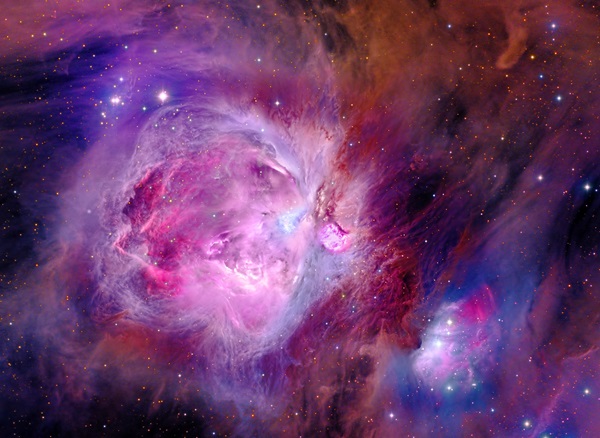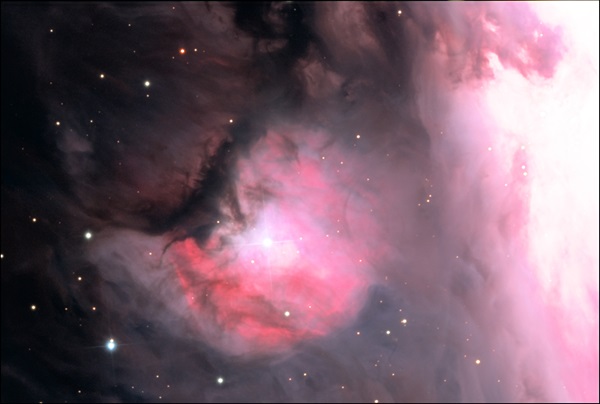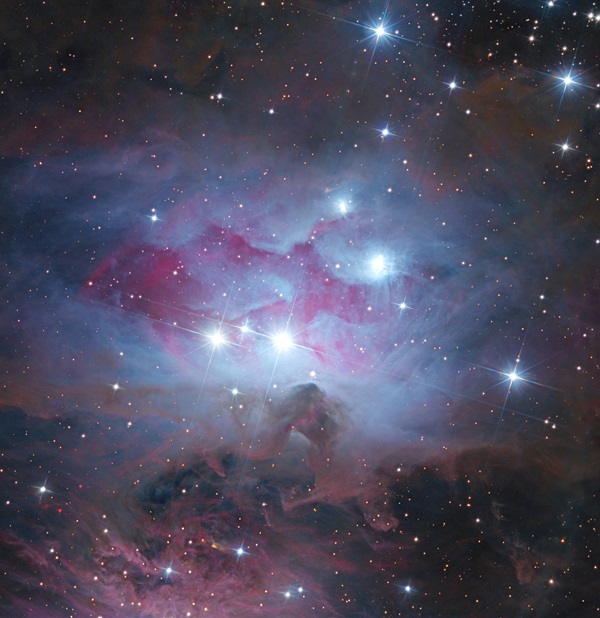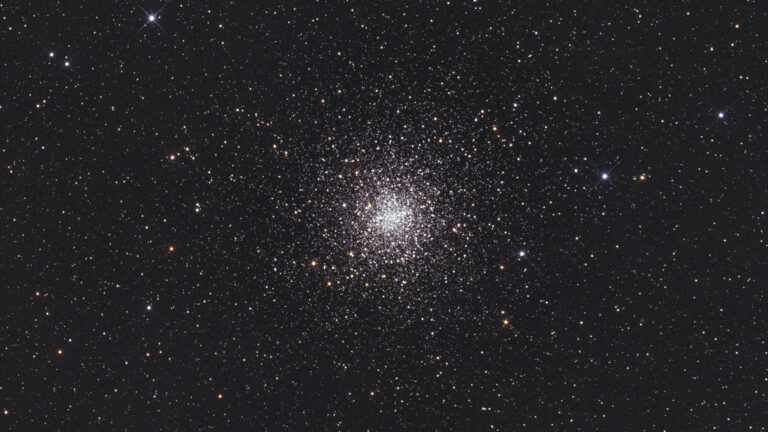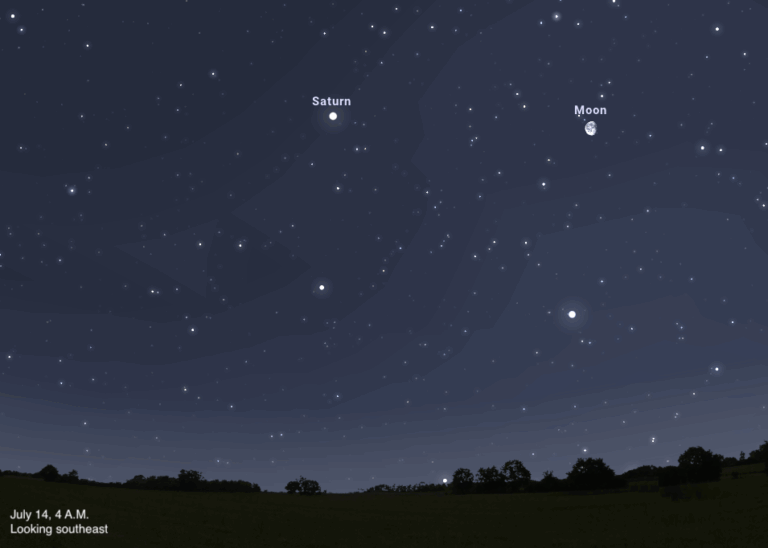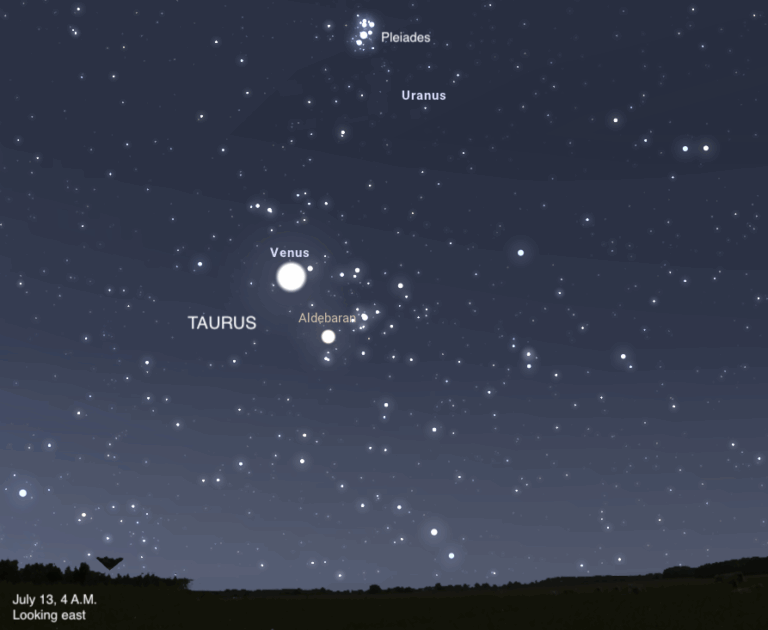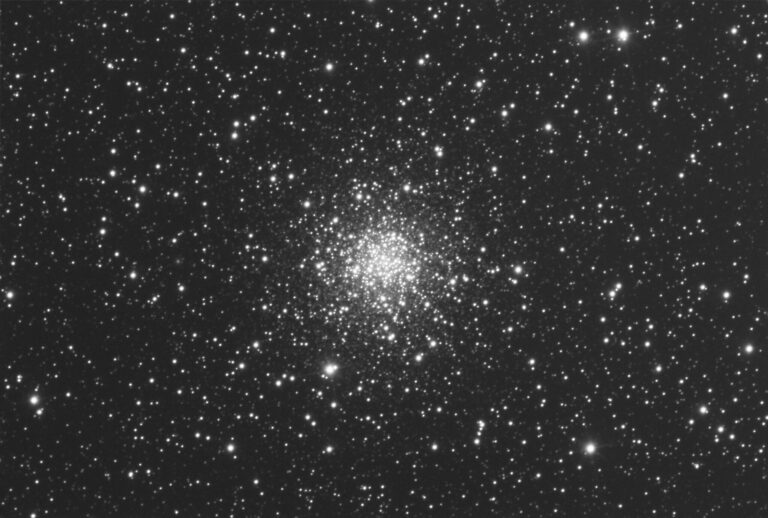Key Takeaways:
This month, we honor the Man of the Hour, indeed of the entire season: Orion the Hunter. No other constellation is as rich as Orion. He has it all — a brilliant presence at all levels, from naked eye through the largest telescopes.
While it may not be an acceptable thing to do in certain circles, we are going to strike Orion below the belt. That’s where we find his sword. While it may look like only three faint stars to our eyes, Orion’s Sword reveals a lot of bling through binoculars.
The middle “star” of the sword is actually the Orion Nebula (M42), a huge cloud of glowing hydrogen gas known as a Hydrogen II region. These H II regions are interstellar maternity wards, where dense pockets of gas and dust are giving birth to new stars. The Orion Nebula has already spawned more than a thousand stars, and more are still to come. Many of these stars are incredibly hot, emitting lethal levels of ultraviolet radiation. As the radiation bombards the hydrogen atoms floating among the stars, electrons are alternately torn off and rejoined to the atoms’ nuclei. In the process, the atoms become ionized and begin to glow. That’s why the Orion Nebula is also referred to as an emission nebula.
Most binoculars show M42 as a soft glow surrounding two stars, Theta1 (θ1) and Theta2 (θ2) Orionis. That’s all you’ll see with a quick glance. But if you stop and savor the scene slowly, more and more subtle detail will come into view. Through my tripod-mounted 10×50 binoculars, the cloud takes on an irregular, curved shape surrounding those stars. My mind’s eye imagines a cupped hand reaching down for those stars from above.
With careful attention, you will also see the dark profile of what looks like a finger sticking into M42 from the north. Nicknamed the Fish’s Mouth, this formation is actually a dark cloud of cosmic dust set in front of the brighter area that lies beyond. Theta1 lies at the tip of the Fish’s Mouth.
If you have 15x or stronger binoculars, you may notice that Theta1 looks odd: It doesn’t quite look like a single star, but it’s difficult to tell exactly why. That’s the impression I get through my 16x70s. But by swapping them for my 25×100 large binoculars, the truth becomes known. Theta1 is not a single star, but rather four stars gathered in a tight pattern known as the Trapezium. That’s your challenge object of the month: What is the smallest binocular or lowest magnification that can clearly resolve the Trapezium? I’d love to hear your results.
The dark nebula that forms the Fish’s Mouth extends across the full span of M42, segregating a small branch to the north that Charles Messier cataloged separately as M43. In reality, both are one and the same physical cloud. Through most binoculars, M43 is a roundish cloud surrounding the 8th-magnitude star SAO 132328. It turns asymmetrical through giant binoculars, looking like a comma that hooks toward the north, pointing the way to our final targets this month.
The northern end of the sword, marked by the wide stellar pair 42 and 45 Orionis, is also engulfed in interstellar dust clouds visible only by reflected starlight. Although the nebula carries three separate entries in the New General Catalogue — NGC 1973, NGC 1975, and NGC 1977 — it’s actually the same complex. Of these, only NGC 1977, the portion just south of 42 and 45 Orionis, is visible through binoculars, and then only with difficulty.
While many people marvel at M42 and M43 and then move on, there is a sparsely populated open cluster to their north that few seem to know even exists. NGC 1981 lies just north of the sword, and it is readily visible through 7x binoculars. You will likely count eight or nine stars within its boundaries, with the three brightest set in a gentle north-south arc.
Take a look at the overall pattern of the stars in NGC 1981. Some say they look like an alligator or crocodile as viewed safely from above. A faint star east of the arc marks its snout, the arc itself the front legs, a fainter arc its hind legs, and finally a star at the cluster’s western edge the tail. Another dozen or so fainter suns also belong to the cluster, giving the gator a soft background glow.
I’d love to hear about your binocular adventures and conquests. Contact me through my website, philharrington.net.
Until next month, remember that two eyes are better than one.


